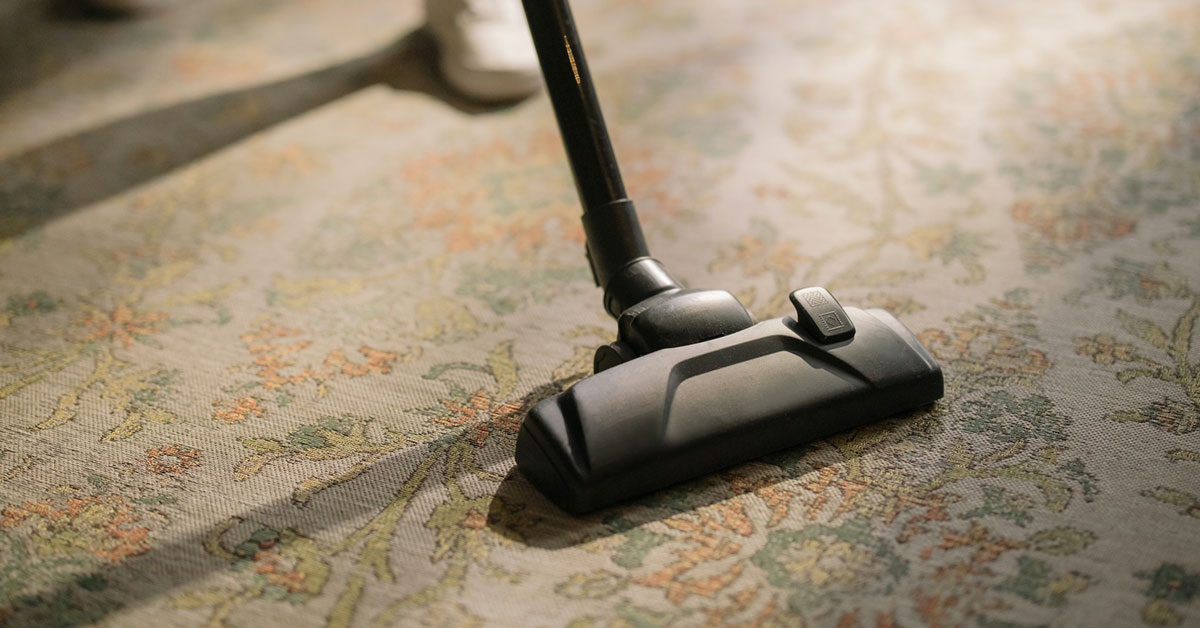Current and prospective long-term care residents, as well as their families and friends expect the interior of the facility to be welcoming, clean and comfortable. In fact, cleanliness is related to the perceived quality of the care delivered to those who live in these types of facilities, according to Harris Poll research from 2020. More than half (54%) of Americans would question the quality of care a long-term care facility offers after seeing dirty carpet at the facility.
Long-term care facilities can avoid the fallout associated with dirty carpet by assessing their carpet care programs and understanding carpet care mistakes to avoid. With a sound approach to carpet care, residents and their loved ones, as well as those considering living in a care facility, will have greater confidence in the facility’s commitment to their needs and wellbeing.
Common Issues and How to Resolve Them
Some of the most common carpet care mistakes are outlined below in addition to solutions that will keep long-term care facilities on the right track.
- Problem: Carpet care is too infrequent.
Whether a facility has broadloom wall-to-wall carpeting or carpet tiles, regular carpet care is a must in order to prolong the life of flooring and keep dirt and stains from becoming noticeable. Carpet in common areas such as hallways, dining rooms and sitting areas requires attention every day or every several days to prevent the buildup of embedded and surface soils that negatively impact the look of carpet. Cleaning teams are often balancing many different priorities and typically push carpet care below tasks such as cleaning and disinfecting. While surface cleaning is paramount, especially during times of increased illness, carpet care needs to be viewed as a crucial recurring process as well.
Solution: Clean carpet regularly to avoid more intensive maintenance later on.
Develop a carpet care schedule that is realistic for staff. Provide teams with equipment that will enable them to quickly, easily and frequently clean carpet. Vacuuming is critical, as well as cleaning deep within carpet fibers. Machines that are lightweight and simple to maneuver will encourage regular use. Machine-mounted solution tanks also make it easier for cleaners to apply cleaning solutions onto carpet.
- Problem: Housekeeping teams are using subpar chemistry.
Does cleaning carpet damage it? There are many different carpet cleaning chemicals on the market, but not all are created equal and yield the same results. In fact, some chemistries can actually leave behind sticky residues that quickly attract soils from resident, staff and visitor shoes. This makes carpet appear dirty shortly after it has been “cleaned” and puts added stress on employees who feel that they are continuously cleaning with unsatisfactory results.
Long-term care facilities are prone to dealing with carpet care stains from urine and vomit. This makes it even more important to have solutions on hand that can remove stains and their associated odors.
Solution: Invest in high-quality cleaning and stain-removal chemistries.
Look for formulas specifically designed to prevent the accumulation of sticky residues associated with many traditional commercial carpet cleaning systems. For example, low-moisture encapsulation chemistry that crystalizes soils protects the color and appearance of carpet and uses far less moisture to remove soils. Choose fragrance-free products to avoid formulations that might aggravate allergies or sensitivities. Employees should also have access to organic stain removers with bio-enzymatic ingredients to eliminate odors in addition to the visibility of bio-based stains.
- Problem: The carpet care process is resource intensive.
Many carpet care methods use large quantities of water to effectively remove soils. Not only is this detrimental to sustainability goals, but it also results in long drying times for carpet. This makes the process more disruptive and time consuming. In some cases, large fans are needed to dry carpet, which can drive up energy usage.
Solution: Choose a system that limits water and energy usage.
With low-moisture encapsulation systems, long-term care facilities can clean carpet with three to 12 times less water, depending on the type of walk behind extractor currently being used. Reducing water consumption is an easy way for facilities to support the environment and means that carpet dries much more quickly – in about 30 minutes. Low-moisture systems are also quick and easy to use. Because they support productivity, they also help limit excessive energy usage.
Pivoting the Carpet Care Approach
Incorrect procedures can become the norm if employees do not fully understand the process of carpet care. By regularly training staff on common carpet care issues, managers can ensure that employees are following industry best practices backed by science and reputable third parties. From failing to perform carpet care on a frequent basis to using too much water, there are many mistakes that can arise. These not only impact the look of carpet, but also how long it will last before needing replacement. By understanding the ins and outs of what not to do, cleaning professionals can better prepare themselves for caring for carpet in long-term care facilities.

